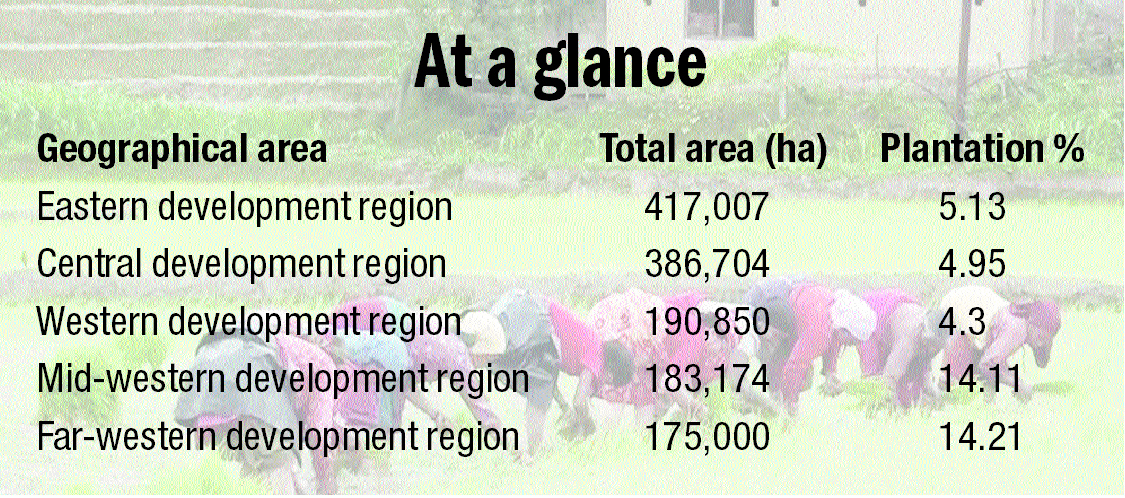El Nino to dampen ‘Rice Day’ celebrations
KATHMANDU, June 29
‘Mano ropera muri ubjaune’ (sow little, reap more) This is a popular adage in the Nepali community during plantation of paddy.
However, the delayed monsoon threatens to water down the National Rice Day celebrations in the country, which is observed on Asar 15 (June 30) every year.
Reduced rainfall is forcing farmers to hold off paddy cultivation. So far this year, paddy cultivation has been carried out on only eight per cent of the total paddy cultivation area — 1,486,951 hectares. And farmers may have to wait few more days to begin cultivation as the El Nino phenomenon has delayed monsoon and affected cultivation in the central and western parts with below average rainfall.
“If the monsoon had arrived on time, paddy plantation in most areas of hilly and mountainous regions (which covers around 30 per cent of the plantation area) would have been done by the end of June,” said Udaya Chandra Thakur, spokesman for the Ministry of Agricultural Development (MoAD), adding, “However, plantations can be carried out in the hilly areas till the second week of July and first week of August in tarai areas without affecting the output too much.”
In tarai — also termed ‘rice bowl of the country’ and which covers about 70 per cent plantation area — farmers are now preparing seedbeds and it takes at least 25 days to finish plantation.
Till date, rice plantation has been done on 17.98 per cent of the total cultivation area in high hills — 61,620 hectares. Likewise, rice plantation has been done in 12.34 per cent of 409,398 hectares in mid-hills and merely 4.3 per cent of 1,015,933 hectares of tarai, according to MoAD.
“Plantation of rice was possible in some areas of tarai and hills despite low rainfall as the International Rice Research Institute (IRRI) had released 100 tonnes of seeds of ‘sukha dhan’ targeting the fields that suffer severe drought in the country.”
However, the MoAD was widely criticised for failing to distribute rice seeds properly to the earthquake victims of the worst-affected districts, whose stored seeds were destroyed. This may also affect plantation as farmers failed to get the seeds in a timely manner.
The MoAD has said that 135,287 tonnes of stored food, mostly rice, was destroyed in the earthquake.
Paddy is the major cereal crop, which contributes 20 per cent in the total agricultural production and about seven per cent in the country’s economy. A total of 4,788,000 tonnes of rice was produced in fiscal 2014-15, which was a fall of five per cent compared to the production of previous fiscal year.
Though large section of its workforce is involved in agriculture — 60.4 per cent of the working age population — Nepal is a food importing country. It has imported 677,000 tonnes of rice till the first 10 months of this fiscal, as per Trade and Export Promotion Centre.






